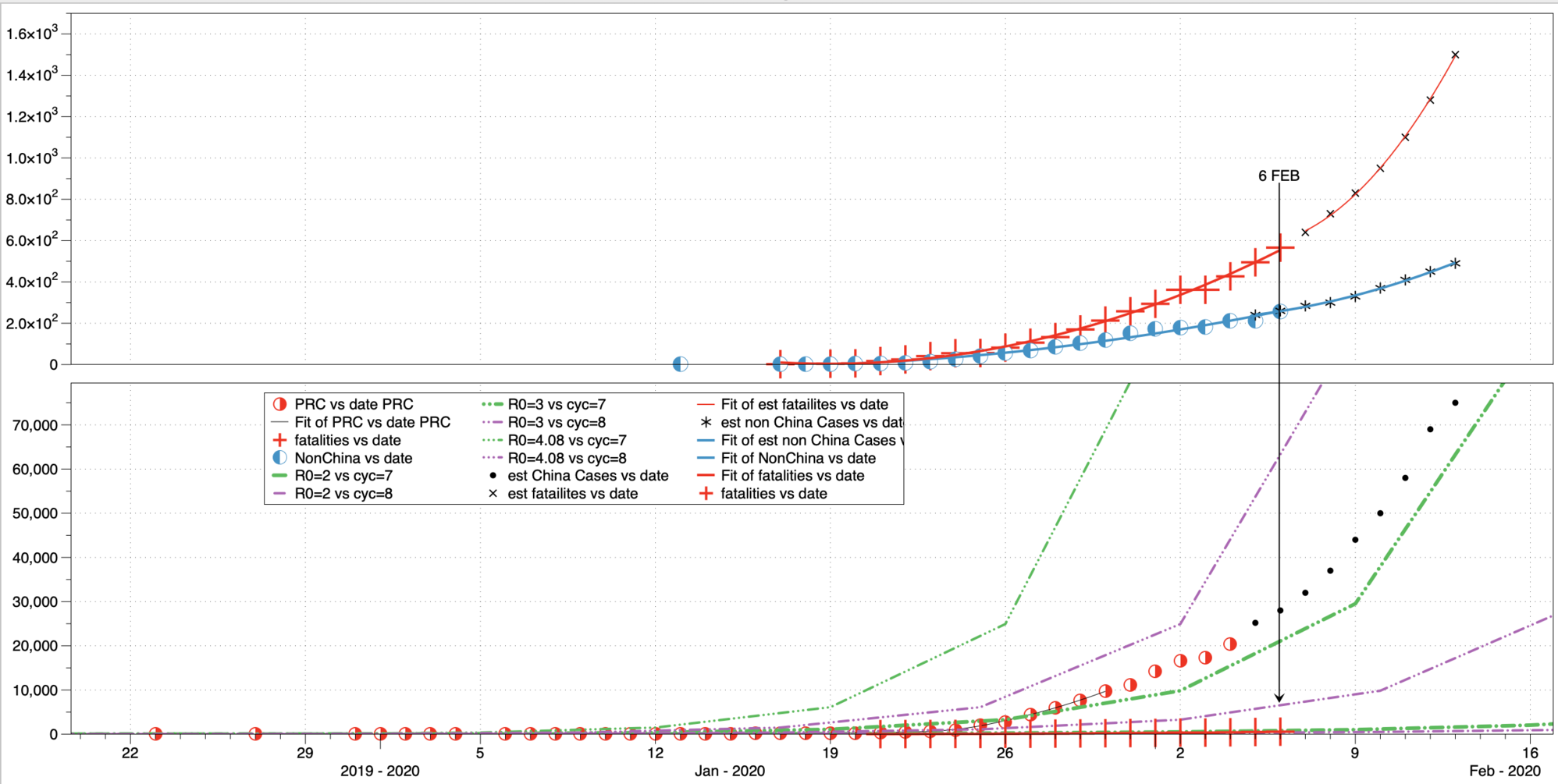OldnGrounded;10680125]
Perhaps. We really don't have enough data to know that with much confidence.
No. Two days is at the low end of the estimated latency (incubation) period, which is thought to range between 2 and 14 days. The earliest estimates of a mean were around 6.4 days. In a 30 January study published in the New England Journal of Medicine -- https://www.nejm.org/doi/full/10.1056/NEJMoa2001316 -- 5.2 days (95% confidence interval [CI], 4.1 to 7.0), with the 95th percentile of the distribution at 12.5 days. And the time between presumed exposure and onset of symptoms was widely varied.
O'nG
I drank a lot of coffee to put in a 2 day value, and here is the reason why is had some angst.
It takes time for the cases to be identified (the point in question) which is then added to a recorded period from detection to outcome. If the mean is applied, then for fatalities recorded on 30 Jan, (213) these would have come out of a pool of patients identified by the 21st, (326 cases, [JHU]). That results in an excessively high mortality rate, given that there are recovered patients (171 recoveries recorded by 30th January) The time to determination of recovery is not identified, so that may be a valid number, or may be higher or lower than actual cases related to cases as of the 21st January. Using that number however, we get 171+213=384 case outcomes, good and bad, from... 326 cases on 21st January. That all looks fine, except the recovery cases are a subset of total cases as far as I understand, following the general premise that 20% of identified cases need ICU care, and 1/2 of those cases end badly. The truth of that is unknown to the public, it is known to the PRC govt, and presumably WHO, CDC etc.
What is evident is that the CFR being quoted by WHO and the CDC etc is flawed, and significantly under reports the rate. Post an outbreak, such as SARS or EBOLA, then the data compares all known cases against all known outcomes. WHO & CDC methodology of using todays fatalities against todays identified cases neglects every fatality that exists for the cases known today that have not run their course of illness to conclusion, good or bad. Going back only the period from today to the average time for an adverse outcome to develop remains within known data and has a rational meaning at that time. Time from diagnosis to conclusion is a metric that is able to be measured. Guessing future deaths is, a guess.
The data does suggest that there is considerable missing data. (IMHO that is more likely to be good than bad paradoxically, more cases that are undiagnosed would reduce the CFR ratio, and this thing is spreading rather well within China. We still have a cycle or two to go in the rest of the world to see how bad it is going to be, but right now, if the figures are correct, this looks generally like a critical problem for the PRC, and a manageable problem to the rest of the world). From 23 DEC 2019 to 21 JAN 2020, there is a certain progression which is geometric but the rate changes from the 21st January to 28th January the rate accelerates. That may be the effect of the Lunar New Year travel causing a widespread expansion of the base, or it is backfilling of the data that was missing, increased accuracy of the reports as the outbreak is taken seriously. From the 30th to date the case rate has a relatively constant exponent, charts as approximately a straight line on a log scale. The last couple of day there is a possible reduction in that exponent, just a hint. Non PRC cases have remained relatively constant in total numbers, trending away from the PRC progression rate. Recorded fatalities are still increasing with an exponent, but it is considerably lower than the PRC case development rate, the fatality exponent has reduced in the last week, but is still an exponent value.
Within China, case development is still a geometric progression, suggesting that the total cases will continue to spread there significantly. Very roughly, the exponent of case development and fatalities are similar at this time,
Outside of China, the spread is either at a lower rate or is being underreported. fatalities outside China remain very low, and associated to PRC cases or nationals. At the total cases level of the non PRC area today, the Mainland China experience had a number of fatalities recorded. This signal is still not present in the non PRC cases, and that may just be due to environmental differences, (weather: temperature, humidity etc) or other causes. It also may be that the mortalities are being missed as nCoV, and are being classified as Influenza fatalities. All things are possible, but the longer the period before fatalities occur in the non PRC region, the greater the likelihood that there is a difference in the outcomes due to unknown factors.
Right now, there are around 4 fatalities that have not occurred in the non PRC area that are going to be the canary in the cage to how this outbreak is going to develop... If they develop in the next 3 days, the whole globe is going to take a correction. If they don't materialise, then there is a clue towards a cure from ascertaining why this is the case; there is an opportunity to support the PRC with medical support and a better allocation of resources to the combating of the outbreak. In total impact terms, this is a tragedy but it isn't the end of the world as we know it, but it will potentially alter demographics in some places.

